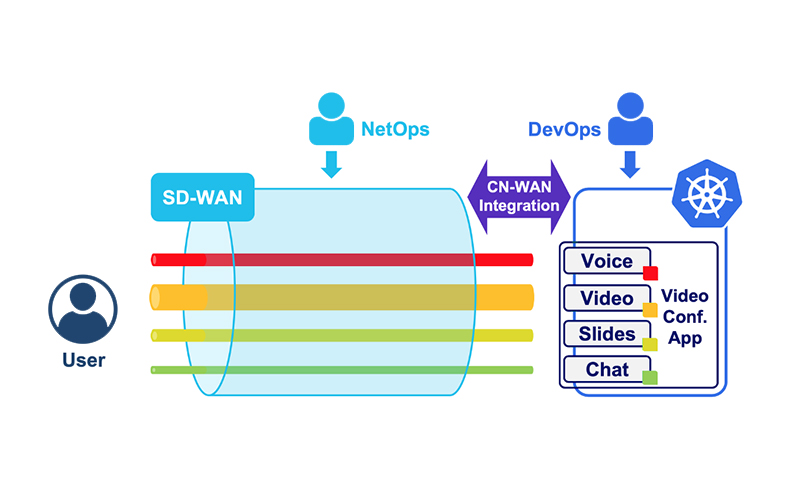A cloud-native architecture helps enterprises build and release new features quite faster, which not only provides greater customer experiences but also ease of management through effortless infrastructure. It makes programs secure and clean to control by packing containers.
Rather than servers and monolithic packages, cloud-native microservices help you obtain higher uptime. The Microservice structure helps us to build packages more easily to be fault-tolerant with resiliency and self-recovery. In case of any issue in a service, you can effortlessly isolate the impact, so it doesn’t take down the complete software.
Cloud-Native SD-WAN helps NetOps to add applications and services with an automated platform, instead of dealing with WAN complexities and expending time and resources tediously managing security and network devices.
A cloud-native application is basically composed of multiple microservices. Each microservice might have different requirements for handling their traffic over the WAN. CN-WAN architecture is designed in such a way that it can automate the optimization of SD-WAN for individual microservice.
Every industry is now consolidating around Kubernetes for dealing with applications within the cloud, including microservices architectures. They use Kubernetes for management and orchestration by adopting DevOps management and deployment practices. In a distributed architecture of current applications, there is a challenge to optimize the connectivity across different locations manually. Therefore enterprises are deploying SD-WAN, to connect the Kubernetes cluster with cloud-native applications.
Cloud-Native SD-WAN (CN-WAN) also reduces the time-consuming manual procedures involved in the integration of Kubernetes applications across SD-WAN, especially for developers and network professionals. It optimizes the performance of the application by mapping Kubernetes application attributes to SD-WAN network capabilities. It increases the efficiency of the DevOps and NetOps team by automating their workflow, making tasks easier.
Enterprises integrate SD-WAN and Kubernetes to reduce latency, packet loss, etc. In general, NetOps work towards optimizing the connectivity to cloud-native applications, hosted via Kubernetes, by leveraging their expertise to program the SD-WAN policies. Thus we can say that DevOps generally works towards Kubernetes infrastructure optimization.

The manual coordination between DevOps and NetOps is really a tedious process. CN-WAN utilizes the basic attributes of Kubernetes and SD-WAN solution to integrate both with less manual intervention. Through this integration, DevOps can provide their WAN requirements of each new microservice they install in Kubernetes cluster and NetOps can automatically provide each microservices requirement as a dynamic WAN optimization.
The integration of SD-WAN with Kubernetes via CN-WAN, based on the application attributes, automatically enhances the performance of the application.
The architecture of CN-WAN includes three major components,

The Kubernetes cluster holds the CN-WAN Operator to actively monitor the deployed services. DevOps team defines the WAN specific metadata for each service and achieves the service registration with respective metadata through CN-WAN Operator and Kubernetes annotations. Kubernetes service exposure and WAN specific metadata delivered by CN-WAN operator are extracted via CN-WAN Reader by connecting and periodically polling to the Service Registry. CN-WAN Reader is triggered to send a message to CN-WAN Adaptor upon the arrival of any new/updated information with respect to services and metadata. Hence, the SD-WAN policies are updated whenever CN-WAN Adaptor receives a message from CN-WAN Reader. NetOps team programs the detailed SD-WAN policies specific to each metadata, which will be utilized by CN-WAN Adaptor to map metadata with policies. Using this process of metadata transition to SD-WAN policy via the major CN-WAN components, the performance of an application can be maximized.
ThinkPalm offers an SD-WAN framework (NetvirE) that can be quickly customized for industry-specific SD-WAN use cases. NetvirE achieves this optimization by using advanced orchestration and management components. It also has policy-based access to cloud applications. It creates secure tunnels between branches on the SD-WAN side. Today organizations prefer improved internet access and last-mile connectivity, additional bandwidth along with a reduction in the WAN costs. At ThinkPalm, we help companies implement virtualization with minimal migration costs, supporting your company to implement CN-WAN in a much cost-effective manner.